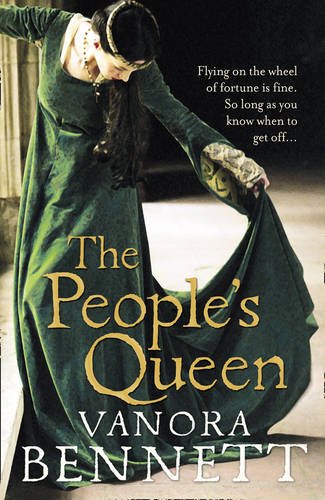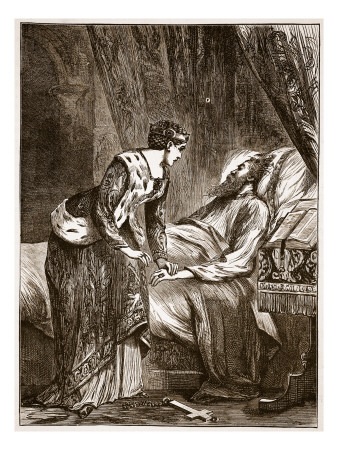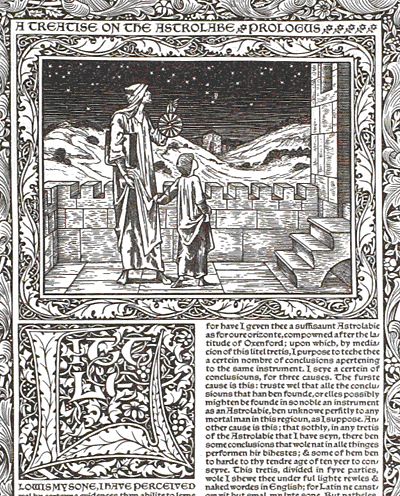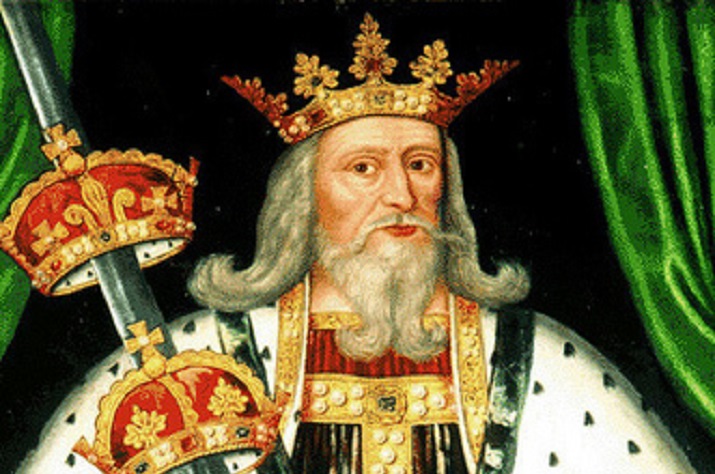 I’ve come to the opinion that Tesco have a lot to answer for. Three books for five pounds they said. You’ll need to read something on a five hour train journey they said. Look! We’ve got historical fiction they said. I bought The People’s Queen by Vanora Bennett in the same offer that saw me acquire The Tudor Wife and another book, which at this point, I am not holding out much hope for.
I’ve come to the opinion that Tesco have a lot to answer for. Three books for five pounds they said. You’ll need to read something on a five hour train journey they said. Look! We’ve got historical fiction they said. I bought The People’s Queen by Vanora Bennett in the same offer that saw me acquire The Tudor Wife and another book, which at this point, I am not holding out much hope for.
The People’s Queen captures a subject close to my heart; the royal mistress, the subject of my first dissertation. This novel is about the woman who introduced the concept of a ‘kept’ royal mistress to England; Alice Perrers, the mistress of Edward III. The book is set during the fourteenth century following Edward’s declining years, the rising unpopularity of John of Gaunt and Alice’s friendship with Geoffrey Chaucer.
Authenticity
The novel certainly gives you a feeling for the fourteenth century. The Black Death and the resulting economical impact, as well as the already failing economy through English wars with France are given coverage and in some detail. It is one of the only pieces of historical fiction that actually sets London apart, and quite considerably, from other English cities, and for once you can actually feel the importance of London and its citizens, whereas, in my experience, many other novels take this for granted. Too often I have read, ‘don’t worry, London will support us,’ or words to that effect in an historical novel, with very little else to suggest that London is actually vitally important.
The level of detail is extraordinary, obviously a great deal of research has gone into this book and it shows. Unfortunately it seems as though the author has included every tidbit of information that she came across in her research. If Alice Perrers wants to help a merchant in an underhand arrangement, fine, it establishes her as dishonest. What I really don’t need is a two page description describing the arrangement complete with wool interest rates, the resulting impact on the military budget and where the money making up the arrangement comes from. The detail is admirable, but even as someone who enjoys economic history, it is really quite dull and does not advance the story. And the book is littered with such details, hence why it took me longer than any other novel to finish. I was so bored, I even put it down during the five hour train journey and opted to enjoy the scenery instead…in the dark.
Accuracy

The timeline (in terms of historical events at least) is accurate, however until the Good Parliament of 1376 I had no idea what the timeline was. It is very difficult to follow when the passage of time is largely unmarked.
The title is misleading, as Alice Perrers was one of the most hated courtiers of the period, and her position as a stand in queen invited nothing but enmity, hardly leaving her open for the popularity required to be considered ‘the people’s queen’.
The support characters (which, really boils down to everyone who isn’t Alice Perrers or Geoffrey Chaucer) are quite believable. I enjoyed Katherine Swynford and her sister Philippa, though they were infrequent (and accurately so) participants, while Edward III is a convincingly ailing king and John of Gaunt is equally plausible as the loving son but unpopular nobleman. Considering the level of research into the time period, and how realistic the characters were, I was so incredibly disappointed with the protagonists. Poor characterisation aside, their characters bear little resemblance to their historical counterparts.
Historically, Alice Perrers became the king’s mistress at fifteen, after her father, a sheriff, acquired her a position in the Queen’s household. This Alice has a completely fictional back-story involving three marriages and in the place of gentry parents, she is an orphan raised by a surprisingly astute, anti-Catholic, peasant ‘aunty’. The point of her poverty stricken back-story is for us to appreciate why it is so important to her to have wealth and status. Unfortunately the narrative follows the historical timeline, and by keeping the dates so vague, it seems like Alice has had three husbands, three children and still found the time to become Edward III’s mistress at fifteen.
Chaucer is equally problematic. Geoffrey Chaucer had an excellent court career, marked with periods of service abroad and of course writing poetry which has influenced the majority of English literature. In The People’s Queen, however, he is an unimpressive drunk. His poetry is ‘less in demand’ – he doesn’t write a single poem in the course of the novel. Yet Chaucer’s career continues as it does historically. He is an adviser to John of Gaunt, he supports a delegation to France, he goes to parliament and occupies a prestigious London desk job while receiving an annuity, that allowed himself and his wife to live in considerable comfort for their station. Despite holding these positions Chaucer is all but penniless in the novel, which doesn’t make all that much sense. He is shown to be astute, but also practically inept and the only reason he receives any advancement is because of his apparent friendship with Alice.
By far, the greatest and strangest mixing of history and fiction comes through Alice’s children. Historically Alice had three children by Edward III, all of whom were acknowledged, one of whom was knighted and married into the Percy family, as one would expect of a king’s bastard. In the novel, however, Alice’s children are by one of the three husband’s she had before her tenure as mistress (a tenure started at fifteen, we must remember).
Spoiler alert

Alice then goes on to have a child after a one night stand with Chaucer. The resulting child is Lewis Chaucer who Bennett claims, having been born thirteen years after Chaucer’s other children to a wife he lived apart from, is likely to be illegitimate. The notion that it is far more likely that Alice is the mother is hardly rock solid, when Alice ceased child bearing before Chaucer’s wife. Philippa Chaucer did indeed live apart from her husband, but Alice was banished from London and so hardly had frequent access to Chaucer. In order for Alice to be Lewis’ mother, we must also wonder how she managed to have a thirty year relationship with a fertile man, without conceiving a child, but can fall pregnant after one night with Chaucer. I could happily accept this in the narrative, but the author goes onto support this entirely fictional scenario as fact in the author’s notes.
Suffice to say, if you are going to entirely fictionalise your protagonists, you cannot keep their historical timeline and expect it to make sense.
Follow us on Twitter @HistoryRemaking
or on Tumblr













